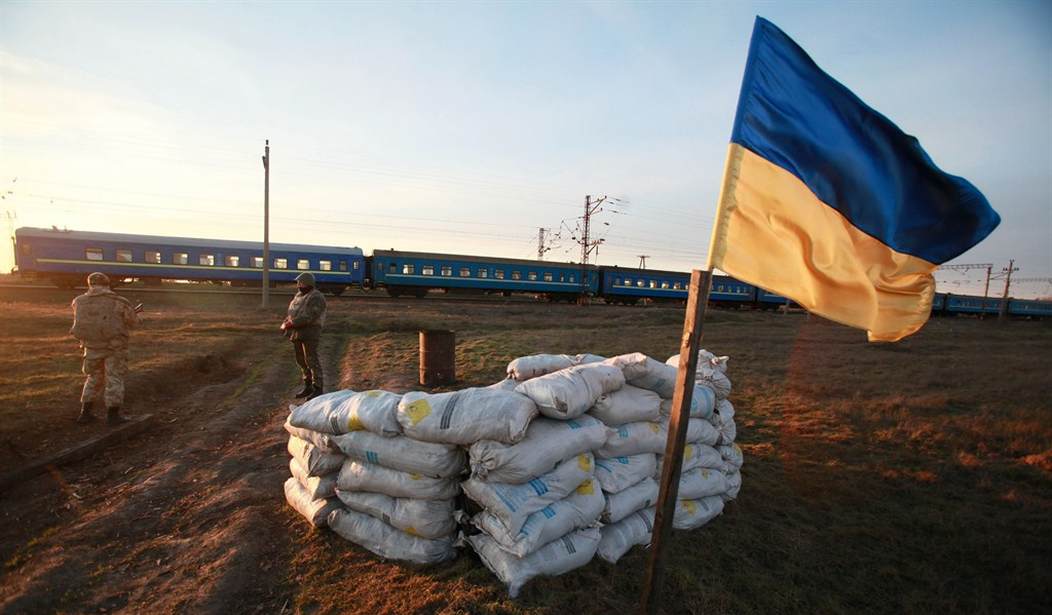Welcome to my newest update on Putin’s War in Ukraine. We are now 36 weeks — 254 days — since Russia launched an unprovoked attack on Ukraine. My last update can be found at Putin’s War, Week 35. The Lull Before the Next Storm. There has been some action, but the crappy weather has slowed things down. Also, both sides are somewhat tired after a punishing summer’s campaigning. I look at this period as the break when the fighters have returned to their corners.
Politico-Strategic Level
Two significant items have been covered outside this update. First, the Pentagon is beefing up the number of weapons inspectors to ensure that weapons allocated to the Ukrainian Army end up there. Naturally, the folks who have been cheering Putin are claiming that this is a nefarious first step towards the US military fighting Russia a la Kennedy’s Special Forces advisors in South Vietnam. I think that is bullsh**, YMMV. If you’re interested, read more at The Pentagon Sends Weapons Security Inspectors to Ukraine; if You Thought Those Opposing Aid to Ukraine Were Happy, Think Again.
The second item is that after Ukraine launched an air-sea drone attack on Russia’s Black Sea Fleet at anchor in Sevastopol (Ukraine Carries out Extensive Drone Attack on Russia’s Black Sea Fleet Sevastopol Homeport), Putin declared that Russia was leaving the agreement that allowed Ukrainian grain to be shipped out of the war zone. By Wednesday, he’d backed down (Vladimir Putin Rejoins Ukraine Grain Deal After He Finds No One Cared That He Left).
Russia’s Dirty-Bomb-False-Flag Gambit Fizzles
Last update, one of the major topics was a claim by the Russian government, including Russian President Vladimir Putin and Foreign Minister Sergey Lavrov, that Ukraine was going to carry out a “dirty bomb” attack on its own territory and then, in best Alex Jones “false flag” tradition, blame Russia for it. The Russians claimed that this was a scheme by Ukraine to draw NATO into the conflict because of the NATO nations downwind, which might be irradiated. An equally plausible alternative is that Russia would detonate the dirty bomb, cry “false flag,” and that would justify Russia using a tactical nuke or five and claiming they were justified. See Russia’s ‘False Flag Dirty Bomb Attack’ Gambit Is Laughed at by Everyone, That Doesn’t Mean They Won’t Do It.
No one bought the story. But, as I reported last week, we know Putin approached China and India with the claim. We don’t know how China reacted, but India was not sympathetic (Putin Ally Shuts Down Russia’s Claim Ukraine Plans to Unleash Dirty Bomb).
The allegation did motivate the International Atomic Energy Agency to send inspectors to the nuclear power plants under Ukrainian control. They reported back that there was no evidence of any missing material for a “dirty bomb.”
IAEA inspectors have completed in-field verification activities at three locations in #Ukraine at the request of the 🇺🇦 government — found no indications of undeclared nuclear activities and materials. https://t.co/RiY9hdJjSb pic.twitter.com/muPb3jeDOU
— IAEA – International Atomic Energy Agency ⚛️ (@iaeaorg) November 3, 2022
Belarus-Ukraine Face-Off Continues
Last update I posted about the low-grade mobilization effort in Belarus and the possibility that Belarus would open a “second front” in the war. I think the danger of this is minimal, but Ukraine has to plan based on capabilities rather than intention, and so the recent belligerence by Belarus has frozen some Ukrainian forces in place.
BREAKING: Ukraine confirms that it has increased its military presence near Belarus's borders
— Samuel Ramani (@SamRamani2) October 27, 2022
The two nations are engaged in a war of words.
The Ukrainian Army has released a video to the people of Belarus.
It says the 2 nations have always had good relations and fought side-by-side in many wars.
The Ukrainians say Lukashenko is a criminal & that Ukraine will fight back if Belarus invades UA. pic.twitter.com/XDFMsjAqcN
— Visegrád 24 (@visegrad24) October 23, 2022
Belarus responds to Ukraine, “If you do not want war, there won't be one. But do not provoke us, do not try to intimidate us, do not escalate and things will be as you want. We do not want war and threaten no one. However, we will respond to any challenges and provocations.” pic.twitter.com/THKGxYOcSM
— Nina 🐙 Byzantina (@NinaByzantina) October 26, 2022
I’m just re-upping this to remind us that the situation between Belarus and Ukraine is very touchy. The Belarus military is providing training to mobilized Russian reservists because Russia has a shortage of trainers due to the war. Russia wants to draw Belarus into the war to open a “second front” to pin down Ukrainian forces so they can’t be used in the east.
Belarus Will Be Under Attack: Shoigu – The Confrontation Between the West and Russia is Intensifying pic.twitter.com/twyPzkj6Tb
— Ignorance, the root and stem of all evil (@ivan_8848) November 5, 2022
At the same time, Belarus is stripping its own military of tanks and armored fighting vehicles to transfer these to Russia to replace combat losses.
Belarusian President Aleksandr Lukashenko is a savvy enough politician to know his people aren’t terribly interested in getting involved in Putin’s War. If you recall, Belarus had a surge of sabotage attacks on its rail lines in the direction of the Russian border (Belarus Rail Lines Carrying Trains With Supplies for the Russian Army Are Being Hit by Sabotage Attacks). In the past week, some more alleged sabotage activity has surfaced.
UNTRAINED, BUT WILLING: It begins. @PotempkinBrain reports that on 25 OCT the Anarcho-Communist Combat Organization (#БОАК) claimed to have blown a rail section linking RU to Ukraine & Belarus. The act was audacious, but charge placement was amaturish. https://t.co/cZhYReuPOc pic.twitter.com/8tZRXXhZ8a
— Chuck Pfarrer | Indications & Warnings | (@ChuckPfarrer) October 28, 2022
#Russia: The Anarcho-Communist Combat Organization has released footage claimed to show to be sabotage on Russian railway infrastructure.This comes as the route to Belarus was sabotaged by explosives, stopping a large amount of military traffic to #Ukraine.
(via @potempkinbrain) pic.twitter.com/9z3PbRs9f6
— POPULAR FRONT (@PopularFront_) November 4, 2022
Ukrainian Special Forces Raids Airfield in Russia
Mainstream media reports that Ukrainian Special Forces carried out a raid on a Russian airfield at Pskov, some 400 miles from Ukraine…but only 20 from Latvia
Ukrainian Saboteurs Reportedly Blew Up Russian Helicopters 500 Miles From Ukraines as two Ka-52s were destroyed at the airfield in the Pskov region, western Russia, and two more were seriously damaged.https://t.co/p8ssH3Mwdd
— Franky Tts (@FrankyTts) November 2, 2022
Airfields aren’t the hardest targets to hit, and the chances of getting in and out without being detected are excellent. That being said, the Ukrainians are proving adept at conceiving and executing outside-the-box operations that a top-down army like Russia’s, has a hard time anticipating.
Mobilization Ends
I’ve covered the mobilization problems in some detail in previous posts. As I mentioned above, the Russians are trying to overcome their lack of a formal training establishment by using Belarusian Army trainers. The whole issue has turned into a political nightmare for Putin. Last week, Putin formally ended mobilization.
Russian MoD announced that by the order of the Defense Minister Shoigu, all activities related to the partial mobilization have been stopped.
GSRF sent instructions to the commanders of the military districts to report by Nov 1 on the completion of partial mobilization measures. pic.twitter.com/52fEKUWXM4
— Status-6 (@Archer83Able) October 31, 2022
Russian mobilization, October 27-28: Defense minister Shoigu announces suspension of mobilization, some mobilized are kept in a cage in an expo center in Kazan, and more regions are preparing to draft students for "labor mobilization"https://t.co/psOHOe2VHJ pic.twitter.com/UIcBzvkPJq
— CIT (en) (@CITeam_en) October 29, 2022
The pain of the men caught up in the process continues.
State representative speaks in front of a group of partially mobilized soldiers minutes before they are sent to Ukraine.
“Dear recruits, you aren’t cannon fodder, you are trained soldiers”.
Some of the soldiers start crying and screaming:
“we are cannon fodder!” pic.twitter.com/RPm3gcEEnO
— Visegrád 24 (@visegrad24) October 28, 2022
Even though I’m clearly supportive of Ukraine driving Russia back to the pre-2014 boundaries of that country, I’m also a professional infantry officer and an avid student of warfare. I may be proven wrong on this, or “time will tell,” as one of the more noxious “tankie” accounts says, but I can’t see how Russia feeds and clothes the men it is sending to Ukraine, much less train them and discipline them into cohesive and effective units. They are cannon fodder in the truest sense of the phrase.
ICYMI, last month, the head of Russia’s mobilization program unfortunately “suicided” himself.
In #Primorsky Krai, the body of Partizansk military commissar Roman Malyk was found. The investigation is considering suicide or murder.
It is known that Malyk had fought in #Chechnya and had not complained about his health recently. pic.twitter.com/lzc9bukHVD
— NEXTA (@nexta_tv) October 15, 2022
Rail Line from Kiev to Chisinau (Moldova) Reopens
Launching train Kyiv-Chisinau today. That's the first time since 1998 when @Ukrzaliznytsia runs this route. 152 passengers travel from Kyiv on the inaugural train. We start with our best fleet, #TrainToVictory. pic.twitter.com/hN35KzzZDq
— Alexander Kamyshin (@AKamyshin) November 5, 2022
Poland Looks East for a Weapons Supplier
Poland cannot get the weapons it wants fast enough from Germany and the United States, so it has turned to South Korea to take up the slack. Of particular interest to Poland is the Chunmoo MLRS, a rough analog to HIMARS. HIMARS, a US-produced system, can’t be manufactured fast enough to meet Poland’s force modernization needs; South Korea doesn’t have that problem. Poland has already bought 190 Korean Black Panther tanks (video below) while waiting for the US to deliver M1 Abrams tanks.
"Hanwha Aerospace Co. of South Korea signed an executive contract, worth US$3.55 billion, with Poland for the supply of Chunmoo multiple launch rocket systems, Seoul's defense authorities announced Friday."https://t.co/wJs1nFh1P4
— Guy Plopsky (@GuyPlopsky) November 4, 2022
I Hate It When That Happens
Russian propagandist Svetlana Babayeva, who headed the Simferopol unit of Russia Today, was shot dead at a training ground in temporarily occupied Crimea. The official version is "an accident, a ricochet during shooting." pic.twitter.com/RAHykjSMMd
— International Observers Ukraine (@INTobservers) October 28, 2022
Operational Level
Operational Overview
These maps serve two purposes. First, they let you see how the fighting has progressed since February 24, so any subsequent maps can be viewed in context. They also serve as a visual rebuttal to the claim that Russia is gaining ground.
This animation takes you from D-Day through September 24.
This animation begins on August 31 and ends on October 4.
Movement since October 4 has been limited — this is the time of rasputitsa when tracked or wheeled vehicular movement off all-weather roads becomes very challenging — but that may be changing.
New Weapons
No major new weapons systems have been introduced into the theater since the last update. The Department of Defense announced another $400 million in aid from its drawdown authority.
The U.S. is sending Ukraine $400 million more in military aid and establishing a security assistance headquarters in Germany that will oversee all weapons transfers and military training for Ukraine, the Pentagon announced Friday. https://t.co/Elz8skrBXx
— The Associated Press (@AP) November 4, 2022
Keep in mind there are a lot of numbers floating about that mean different things. Always keep in mind Authorized (authorized by Congress) ≠ Appropriated (allocated by Congress to an agency) ≠ Obligated (contract signed) ≠ Disbursed (check written). Please read my post; Defense Department Announces Another $625 Million in Ukraine Aid So Let’s Take a Look at DoD IG Report on Ukraine Spending So Far to understand how these numbers fit together…or don’t necessarily fit together.
The US is paying part of the cost of applying major upgrades to Warsaw Pact tanks still held by NATO members who used to be Soviet client states.
Pentagon will pay to upgrade dozens of Soviet-era tanks for Ukraine @politico https://t.co/21d2yR6Ti5
— Ivana Stradner 🇺🇸🇺🇦 (@ivanastradner) November 5, 2022
Prisoner Exchanges
Another exchange of prisoners was held. We managed to free 52 of our people – officers, medics, sergeants and soldiers – @AndriyYermak
Among them are 12 soldiers of the NGU, including two #Azov, 18 from the Navy, 8 from the State border service, 9 from the Territory defense, pic.twitter.com/snMvq5N9NV
— ꑭ Natalïa ꑭ (@NatalieSmal) October 29, 2022
There was a prisoner exchange between Russia and Ukraine today, as a result of which 107 Ukrainians were released, The Security Service of Ukraine informed.
The exchange occurred in the same place as the one in June – in Kamianske, Zaporizhzhia Oblast (47.539232, 35.366690). https://t.co/vxUNCDM8Ya pic.twitter.com/7jQsMvk6JJ
— Status-6 (@Archer83Able) November 3, 2022
The Return of “Blocking Units” and Stalin’s Order 227
During the early days of Operation Barbarossa, Soviet troops frequently broke and ran. To stop this, Stalin issued his infamous Order 227, which established “blocking” or “barrier” units and penal battalions. The blocking units were NKVD troops who had the mission of killing anyone retreating. This order has made a reappearance.
SHOOT TO KILL: UK Defense Intel bulletin for 4 NOV notes that frontline RU units in Ukraine are now positioned in front of “Blocking Units”. These specially designated Russian troops are authorized to shoot and kill deserters. The morale of RU troops is abysmal. pic.twitter.com/KX0xmmK5DK
— Chuck Pfarrer | Indications & Warnings | (@ChuckPfarrer) November 4, 2022
Combat Operations
Kharkiv
Skirmishing continues in this area of operations. The Ukrainian Army is making very slow progress, but not a lot of effort is being applied. The Ukrainians have obtained control-by-fire of the Svatove-Kreminna highway, making moving troops and supplies to the frontlines much longer and more challenging.
“According to the latest data, the Armed Forces have taken the track under full fire control and combat work continues there, which will be reported later,” the spokesman of the Eastern Group of Forces of the Armed Forces of Ukraine, told Suspilne.https://t.co/n18TDB6Xiz
— Mattia Nelles (@mattia_n) October 28, 2022

Ukrainian Special Forces and partisans are active in Donbas.
The collaborator judge Alexander Nikulin, who sentenced the British volunteer soldiers @cossackgundi and Shaun Pinner to death after they were captured by the Russian Army, is now fighting for his own life after having been shot today by Ukrainian partisans in Vuhlehirsk.
🇬🇧🇺🇦 pic.twitter.com/y6lpAqvo5R
— Visegrád 24 (@visegrad24) November 5, 2022
Donbas
The Russian Army continues with nearly daily assaults in the Bakhmut, Avdivika, and Marinka areas. The frontline remains unchanged. There has been a lot of huffing and puffing on the “tankie” (pro-Russian accounts that follow the war) about Russian gains in those areas. Here are the situation maps from today and two weeks ago via the Institute for the Study of War. Compare the front lines for yourself.
Credit: Institute for the Study of War
What makes this entire slugfest mysterious is “why?” Even if the Russians take the cities they’ve been trying to storm for the last three months; they don’t lead anywhere. They aren’t major road junctions. They don’t control important bridges or river crossings. The best objective I can come up with is that it is an attempt to occupy the historical boundaries of Donetsk. In August, this arguably made sense if Putin intended to call a cease-fire. Now, having lost a lot of Luhansk and with the impending disaster in Kherson, more on that below, it seems senseless. The objectives themselves seem to have taken on a life of their own.
Combat Video
#Ukraine: Insane video from the East showing extremely rare combat use of a (Fort-12?) pistol- a Russian soldier being taken prisoner attempted to throw a grenade at Ukrainian forces. It didn't work out. pic.twitter.com/hedAsRHjzs
— Cᴀʟɪʙʀᴇ Oʙsᴄᴜʀᴀ (@CalibreObscura) October 29, 2022
Full video version pic.twitter.com/0aqcBqv3Oh
— BlueSauron👁️ (@Blue_Sauron) October 31, 2022
Kherson
The operations in Kherson are sort of a mystery to outside observers. The Ukrainians have been unusually tight-lipped. This is what we know. We know that most of Russia’s combat power in Ukraine has been committed to this area of operations. And a majority of that power is on the left (if you are facing downstream) bank of the Dnieper. We know that occupied Kherson’s military and civilian command structure has abandoned Kherson City in favor of Skadovsk.

The head of the quisling government in Kherson, Kirill Stremousov, says to expect the right bank to be abandoned.
Russian-installed official in Kherson, Kirill Stremousov says Russian troops will “most likely” pull back to the left bank of the Dnipro, so people should leave Kherson city urgently.
He says it’s not certain but “most likely”.https://t.co/TO28NsYuLF pic.twitter.com/nHSYj4V3oZ— Patrick Reevell (@Reevellp) November 3, 2022
Pre-fab concrete pillboxes (the technical term for these is “targets”) are appearing in several cities in Kherson.
Russian forces delivering concrete pillboxes in Kherson Oblast. https://t.co/w0vUaLV8nF pic.twitter.com/oNgTrAxmyq
— Rob Lee (@RALee85) November 1, 2022
More evidence that Russian are fortifying the Eastern/Southern bank of the Dnipro River. In Hola Prystan a batch of the concrete pillboxes arrived.
Exact coordinates:
46°32'9.11"N, 32°31'59.52"E#Kherson #Ukraine pic.twitter.com/3lcOvqZfCa— (((Tendar))) (@Tendar) November 2, 2022
According to analysis of commercial satellite imagery, Russia is constructing three defensive lines on the left bank.

One thing we learn from this is what will not happen. If you recall, in my update two weeks ago (Putin’s War, Week 34. False Flags, Martial Law, and ‘Dammed if You Do and Dammed if You Don’t’), there were claims and counter-claims alleging that Russia or Ukraine was planning to demolish the dam at Nova Kakhovka. This would drain the Dneiper River reservoir making the Dneiper an impassable obstacle. On the flip side, draining the reservoir would put the canal carrying water to most of occupied Crimea out of service.
If Russians blow up the Nova Kakhovka dam then they would flood the occupied cities in the South. Plus, the canal bringing water to Crimea would dry up. #Kherson #NovaKakhovka #Crimea #Ukraine pic.twitter.com/DCP0eHUiSV
— (((Tendar))) (@Tendar) October 20, 2022
If those defensive lines are correct, then the flooding from a destroyed dam would flood them and render them useless.
One mysterious move is the Russian Army destroying all the boats on the Dneiper River.
NO WAY OUT: @NOELreports that RU troops have deliberately destroyed small craft and boats at marinas and docks in the city of Kherson. These boats were likely scuttled to prevent Russian soldiers from stealing them and deserting across the Dnipro river. https://t.co/mQvXxDQlwu pic.twitter.com/ulWdNbVx0S
— Chuck Pfarrer | Indications & Warnings | (@ChuckPfarrer) November 3, 2022
I think Chuck Pfarrer (former SEAL, give him a follow if you use Twitter) is right. Destroying the boats is not to prevent Ukraine from using them; it is to prevent desertion. In addition, those boats would be of use to the Russian Army in supplying its troops.
The partisan and Special Forces activity in Kherson continues.
GeoConfirmed.
“Cars burning at the parking lots of the Russian patrol police in Kherson, claimed to be separatist action.”
46.6635722, 32.6137552
GeoLocated by @auditor_ya and @bayraktar_1love pic.twitter.com/SYSbCGvtUC
— GeoConfirmed (@GeoConfirmed) October 28, 2022
The temporary bridges used by the Russians to sustain forces on the left bank are under continuous, accurate attack.
#Breaking footage
Ukrainian precise GMLRS destroys the Russian-built pontoon bridge parallel to the damaged Antonovsky bridge over the river Dnepr in Kherson oblast.
Six blasts hit the swimming installation. pic.twitter.com/G6zVeLkDEg— Julian Röpcke🇺🇦 (@JulianRoepcke) November 2, 2022
If you’ve studied military operations that require evacuating large numbers of forces in contact with the enemy (I’d point to Washington after Second Trenton and the evacuation of Gallipoli), it is obvious that to pull some 30,000 troops and their equipment across two or pontoon bridges that are under rocket attack while holding off an aggressive enemy requires a level of skill, daring and Fingerspitzengefühl that we have not yet witnessed in Russian commanders.
This has led some to claim that Russia intends to hold the right bank and that the highly visible preparation for retreat is a head fake to lure the Ukrainians into a hasty assault.
I think the Russians have to fight it out on the right bank because I can’t see how they can hope to move men, tanks, artillery, trucks, etc., across the Dneiper while in close contact with the Ukrainian Army. If the Russians make that decision, I don’t see how they win because the pontoon bridges can’t support the volume of traffic necessary to support the force in contact.
Looking Forward
Last time I said this:
My assessment is that Russia has ceded initiative on the battlefield to Ukraine; it is concentrating its efforts on fracturing the NATO-led supporting coalition and creating a populist movement in Europe that blames Ukraine for energy prices.
Ukraine has opportunities to attack; the challenge is picking the right battle and having sufficient men and materiel to penetrate the Russian front lines and create breakthroughs at the operational level, as happened in September (Kharkiv) and October (Kherson). Kherson, I think, will largely take care of itself. The majority of the Russian troops are on the right bank of the Dneipr River and dependent on barges, and frequently attacked pontoon bridges for support. Ukraine has nothing to gain from engaging in street-to-street fighting in Kherson when it can wait and force the Russians to abandon the city and countryside.
In Kharkiv, keep an eye on Svatove. A breakthrough there will probably be focused on Starobilsk. If it succeeds, supplying Russian troops south of that point will be very difficult. Finally, look for something big to happen in Zaporizhzhia on the axis Orikhiv-Tokmak-Melitopol.
I think that still holds. But, somewhere in Kherson today, this happened.
The hustle is coming. 😎 pic.twitter.com/Y8bk1ATg5o
— NOËL 🇪🇺 🇺🇦 (@NOELreports) November 5, 2022














Join the conversation as a VIP Member